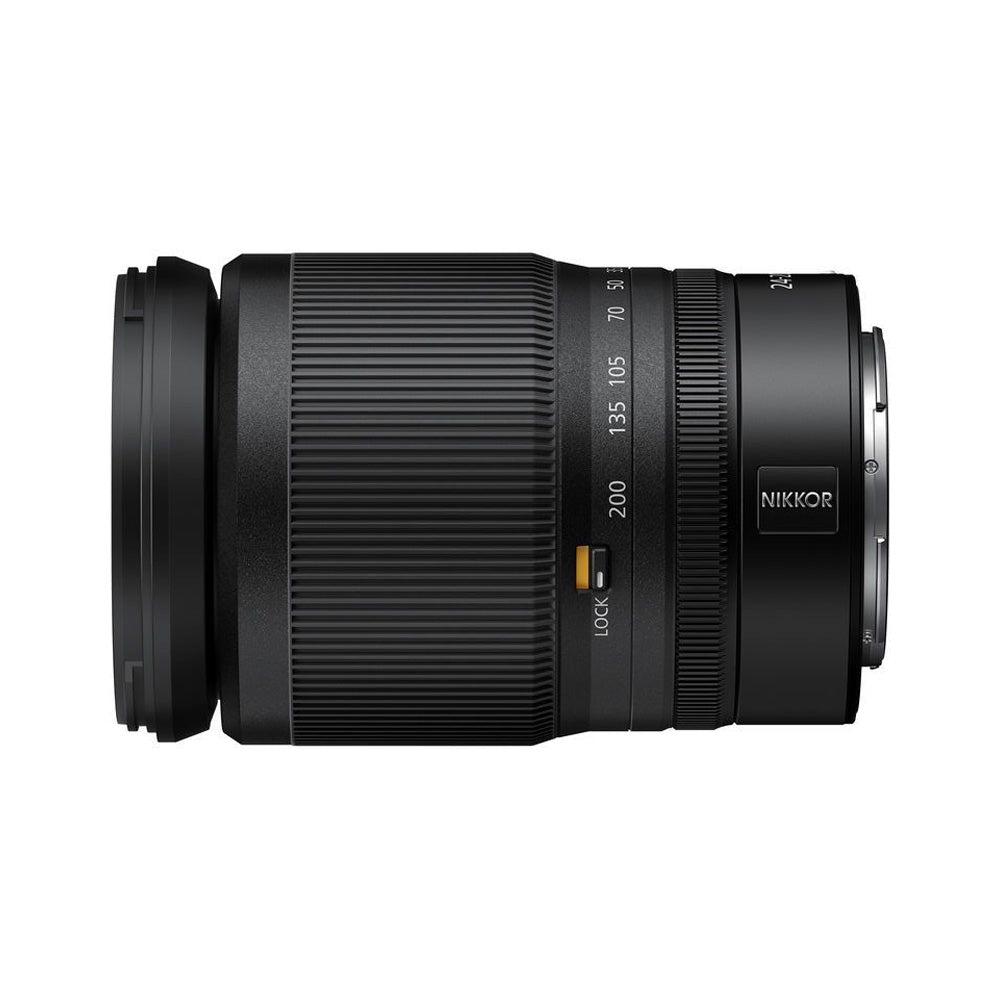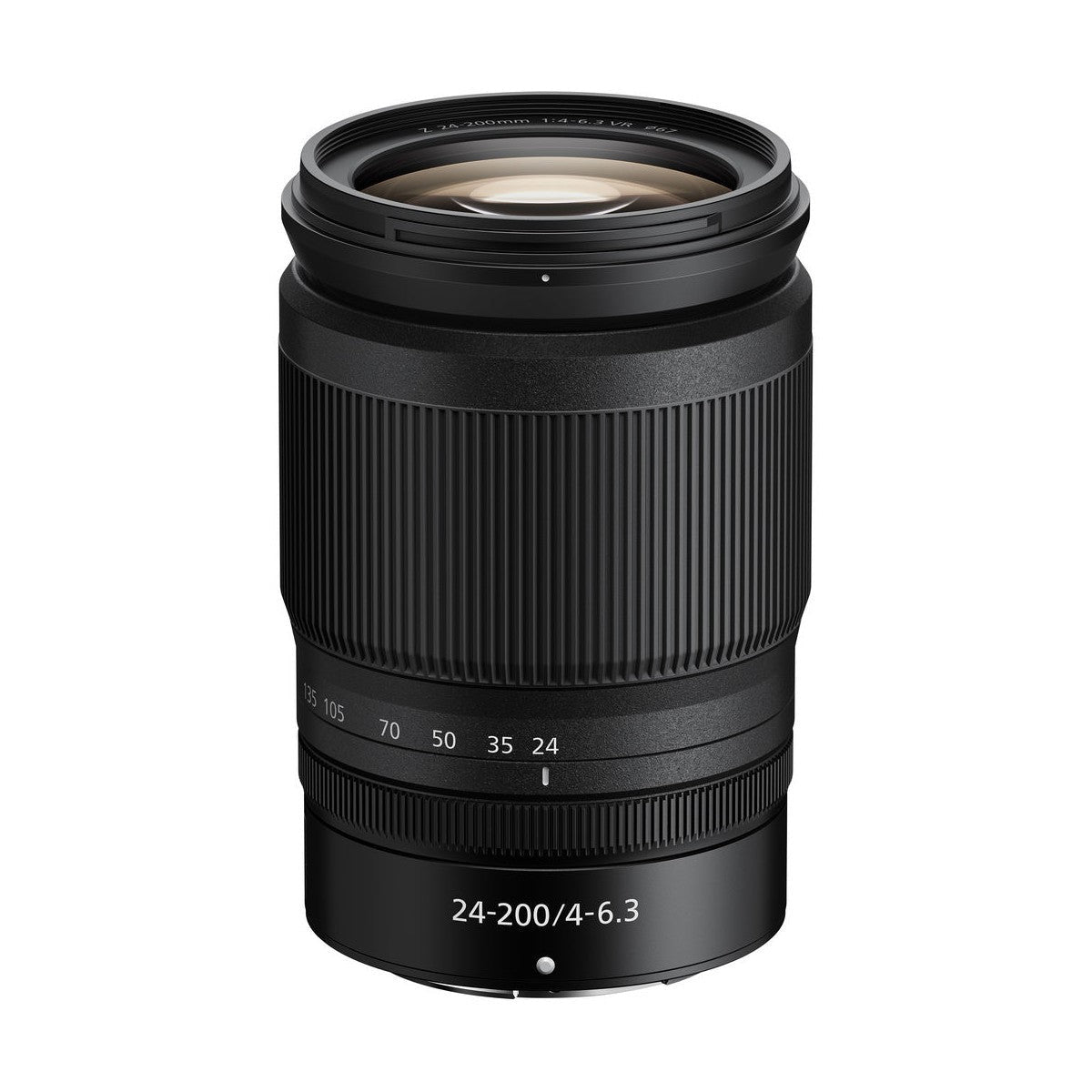Product Description
Nikon NIKKOR Z 24-200mm f/4-6.3 VR Lens
The Nikon NIKKOR Z 24-200mm f/4-6.3 VR Lens is a versatile and compact telephoto zoom lens designed for Nikon’s FX-format Z-mount mirrorless cameras. It provides an extensive zoom range from wide-angle to telephoto, making it a comprehensive solution for various shooting scenarios, whether you're capturing landscapes, portraits, or distant subjects.

Key Features:
- All-in-One Zoom Range: Covers a focal length of 24-200mm, offering an 8.3x zoom ratio that caters to both wide-angle and telephoto needs.
- Compact and Lightweight: Its design is highly portable, making it ideal for travel and everyday use.
- Advanced Optical Design: Incorporates two aspherical elements, one aspherical ED element, and two extra-low dispersion elements to minimise distortion, chromatic aberrations, and colour fringing, resulting in sharp, clear images with vivid colours and deep contrasts.
- ARNEO and Nano Crystal Coatings: These coatings combat ghosting, flare, and reflections, ensuring improved contrast and clarity, especially in strong or backlit lighting conditions.
- Vibration Reduction (VR): Built-in image stabilisation reduces the appearance of camera shake by up to 5 stops, facilitating sharper handheld shooting and smooth video recording.
- Stepping Motor Autofocus: Delivers fast, quiet, and precise autofocus performance, ideal for both still photography and video. Full-time manual focus override is available.
- Programmable Control Ring: The lens features a programmable control ring that can be set to adjust manual focus, aperture, or exposure compensation for intuitive control over various settings.
- Rounded 7-Blade Diaphragm: Produces smooth, aesthetically pleasing bokeh for shallow depth of field and selective focus effects.
- Durable Build: Dust and moisture-resistant construction enhances the lens's durability in challenging environments.

Optical Performance:
- Elements: 16 elements in 12 groups, including 1 ED glass element and 2 extra-low dispersion elements.
- Coatings: ARNEO Coat, Nano Crystal Coat, and Super Integrated Coating to prevent flare, ghosting, and reflections.

Practical Benefits:
- Minimum Focusing Distance: 0.5m, allowing for detailed close-up shots and versatility in framing.
- Exposure Control: Electromagnetic aperture mechanism ensures consistent exposure control, especially useful for continuous shooting.

Compatibility:
- FX-format Z-mount Cameras: Fully compatible, but can also be used with DX-format cameras, providing a 36-300mm equivalent focal length range.

Supplied Accessories:
- LC-67B: 67mm Snap-On Front Lens Cap

Optional Accessories:
- HN-43: Lens Hood
- CL-C1: Lens Case
- 72mm Screw-on Filters: Compatible with standard 72mm filters for additional creative options.

Specifications:
- Focal Length: 24-200mm
- Maximum Aperture: f/4-6.3
- Minimum Aperture: f/22
- Angle of View: 84° to 12° 20'
- Minimum Focusing Distance: 0.5m
- Lens Construction: 16 elements in 12 groups
- Filter Size: 67mm
- Weight: Approx. 570g

The Nikon NIKKOR Z 24-200mm f/4-6.3 VR Lens is an exceptional all-in-one zoom lens that delivers impressive performance across a broad focal range. Its compact size, advanced optics, and versatile features make it an ideal choice for photographers and videographers seeking a reliable and portable lens for a wide range of shooting situations.

Payment & Security
Your payment information is processed securely. We do not store credit card details nor have access to your credit card information.



















